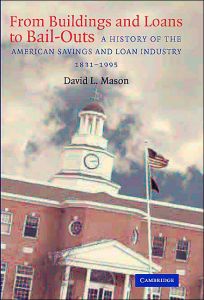Join getAbstract to access the summary!

Join getAbstract to access the summary!
David L. Mason
From Buildings and Loans to Bail-Outs
A History of the American Savings and Loan Industry, 1831-1995
Cambridge UP, 2004
What's inside?
Everything you ever wanted to know about the American building and loan industry, from boom to gloom.
Recommendation
With thrifts like Washington Mutual now among the nation’s biggest financial institutions, and the excesses of the 1980s still fresh, it’s hard to believe that savings and loans once were nonprofit cooperatives. Yet, so-called buildings and loans were, in fact, altruistic associations that sought to give working-class people access to credit. Business historian David L. Mason lays out the little-known roots of the S&L industry in this intriguing study. He outlines the cultural, political and economic forces that shaped thrifts. While Mason doesn’t shy away from the S&L debacle of the 1980s, he makes it clear that he sides with the institutions. Readers looking for dirt on the crisis should look elsewhere. Still, getAbstract recommends this thorough report to anyone who’s curious about the history of the thrift industry.
Summary
About the Author
David L. Mason, a banker for nearly 10 years, is an assistant professor of history at Young Harris College. He has a doctorate degree in business history from Ohio State University.

















Comment on this summary